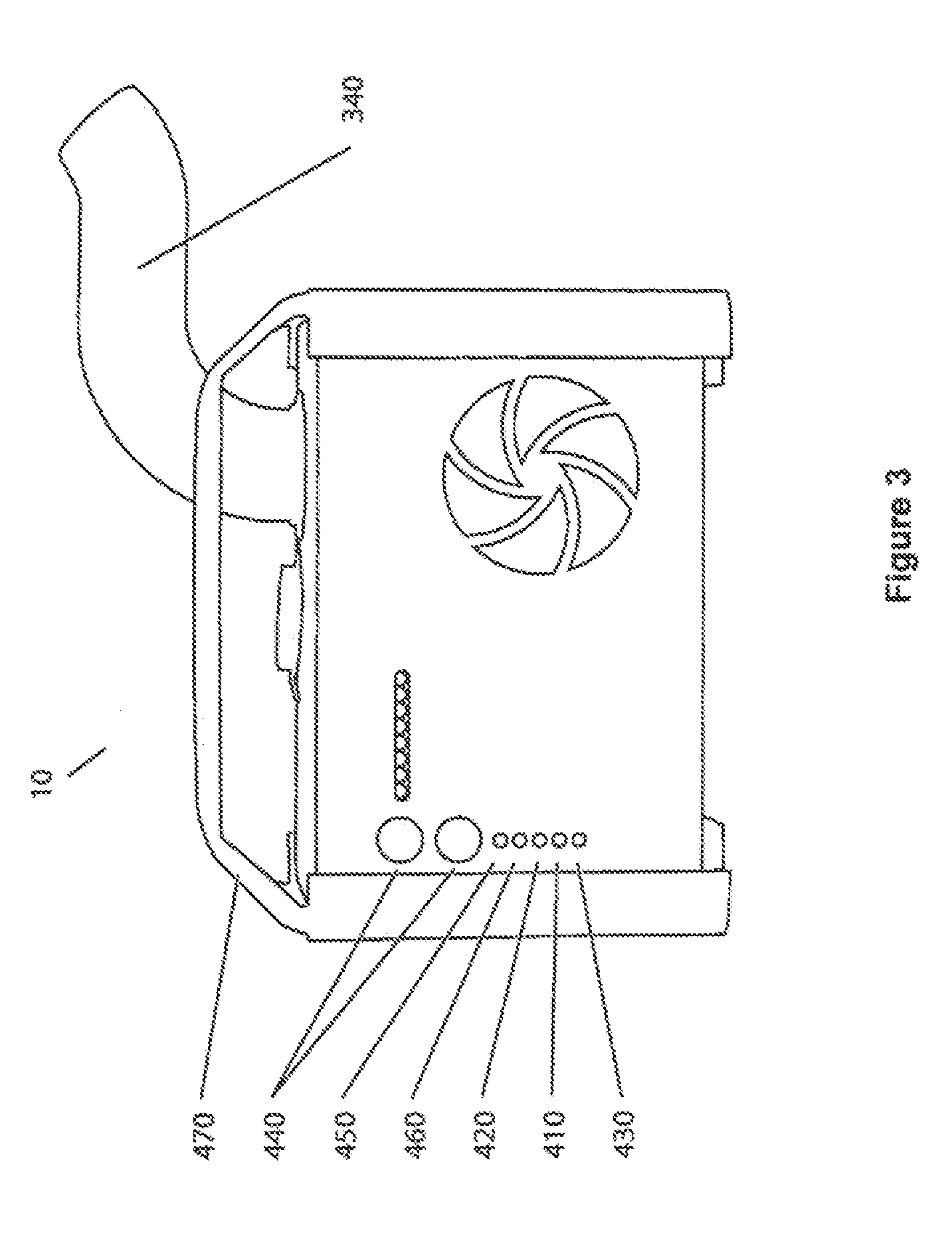Cleansing system using ozone and nebulized fluids
a technology of ozone and nebulized fluids, applied in the field of cleaning, disinfection and deodorization, can solve the problems of inadequate ventilation, poor indoor air quality, and inability to purge indoor air pollutants from any confined space, so as to reduce ozone levels, clean and deodorize an environmental space, and remove residual odors
- Summary
- Abstract
- Description
- Claims
- Application Information
AI Technical Summary
Benefits of technology
Problems solved by technology
Method used
Image
Examples
Embodiment Construction
[0069]The present invention has utility as a process and an apparatus to cleanse and deodorize environmental spaces. In particular, it relates to the deodorization, disinfection and neutralization of odor-generating substances such as those produced by bacteria, fungi, cooking fumes, animal smells or other odors and the like, which may additionally form multi-layers or exist in hard-to-reach areas.
[0070]Traditional deodorizing treatments using ozone alone may in some circumstances be insufficient due to insufficient penetration properties of ozone in the environment to be treated. Therefore, the interior of odorous substances or clusters may be protected from the deodorizing effect of the ozone. In addition, while ozone attacks micro-organisms at their surface, the debris of cells is left behind and can form a breeding ground for new infestation. Due to the limited time during which ozone may be present in an area, either for safety reasons, or due to its natural quenching once its ...
PUM
 Login to View More
Login to View More Abstract
Description
Claims
Application Information
 Login to View More
Login to View More - R&D
- Intellectual Property
- Life Sciences
- Materials
- Tech Scout
- Unparalleled Data Quality
- Higher Quality Content
- 60% Fewer Hallucinations
Browse by: Latest US Patents, China's latest patents, Technical Efficacy Thesaurus, Application Domain, Technology Topic, Popular Technical Reports.
© 2025 PatSnap. All rights reserved.Legal|Privacy policy|Modern Slavery Act Transparency Statement|Sitemap|About US| Contact US: help@patsnap.com



